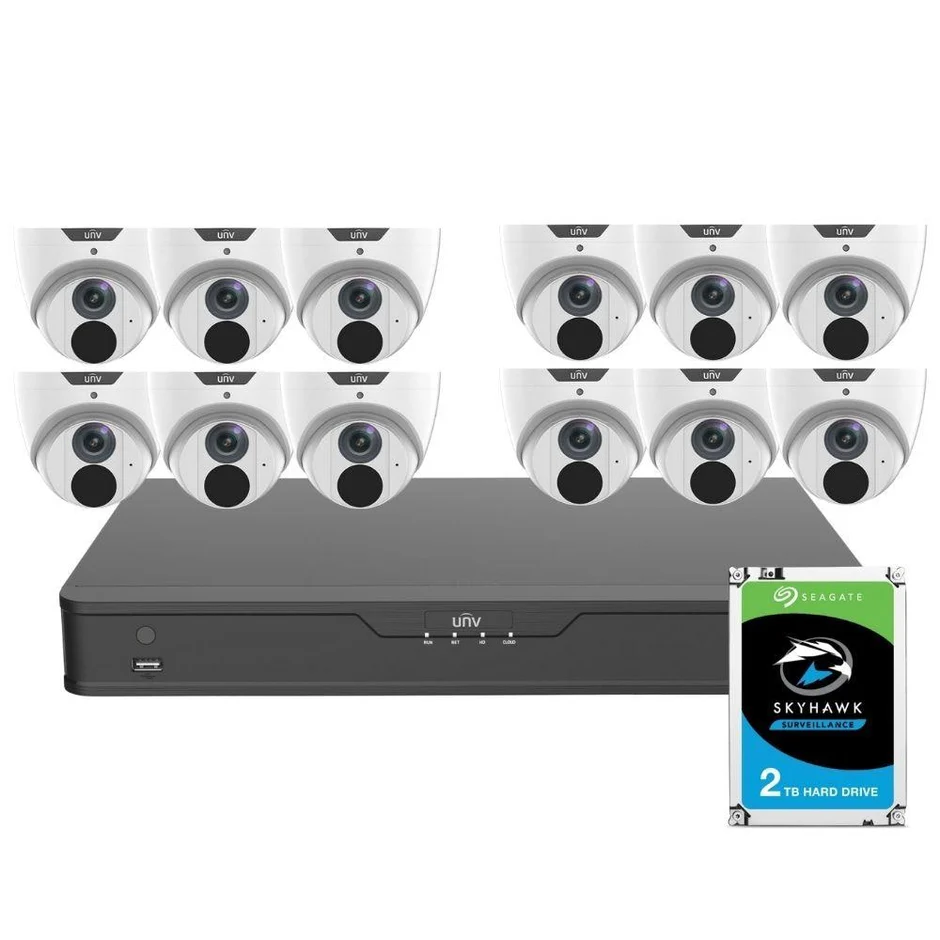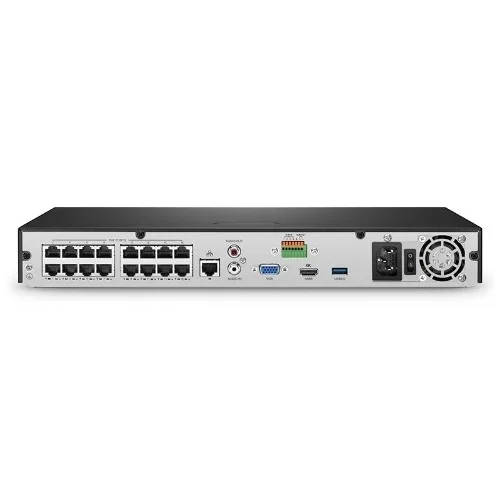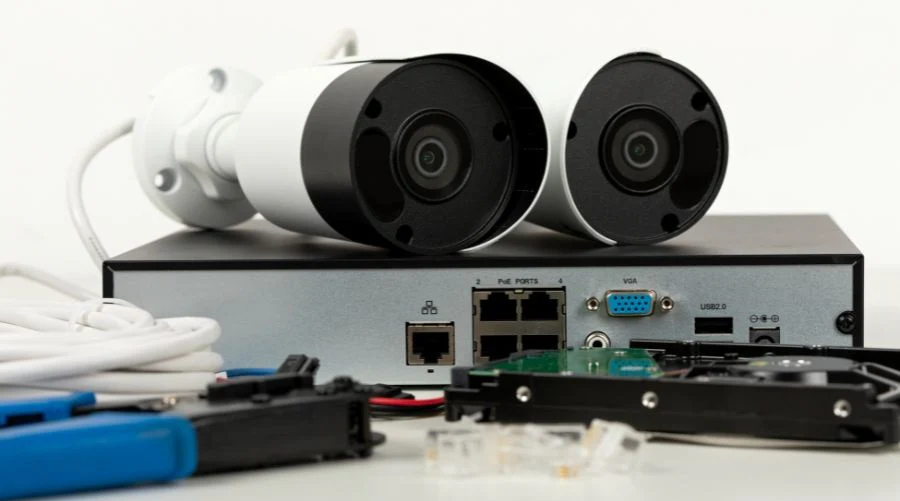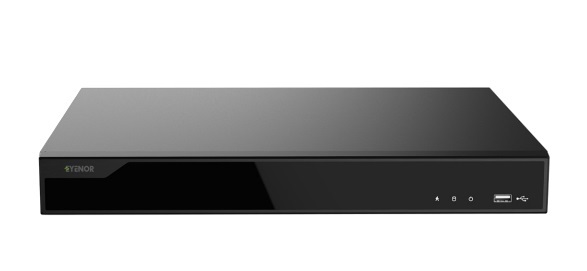Introduction
Have you ever wondered how many cameras you can actually connect to your NVR system? If you’re planning to build or upgrade your surveillance system, understanding NVR camera channel capacity is a must. It’s like figuring out how many guests you can fit at your dinner table — each channel represents a seat, and every camera needs one. In this guide, we’ll break it all down in plain English.
Table of Content
- Introduction
- What is an NVR and How Does It Work?
- Understanding NVR Camera Channel Capacity
- How Many Cameras Per NVR?
- NVR Channel Limit Explained
- Camera Limit on 8 Channel NVR Systems
- Camera Limit on 16 Channel NVR Systems
- NVR Camera Compatibility Guide
- IP Camera to NVR Connection Tips
- Expanding Your NVR Camera System
- NVR Camera Input Guide
- NVR Recording Capacity Review
- Best NVR for Multiple Cameras
- Surveillance System Scalability
- NVR Setup for Large Properties
- Conclusion
- FAQs
What is an NVR and How Does It Work?
A Network Video Recorder, or NVR, is the brain of your security system. It records and stores footage from IP cameras over your network. Unlike DVRs that use analog cameras, NVRs rely on digital IP cameras, offering clearer images and more features.
Think of it as a digital library where each camera is a book — the more shelves (channels) your NVR has, the more books (cameras) it can store.
Understanding NVR Camera Channel Capacity
So, what exactly is NVR camera channel capacity? In simple terms, it’s the number of video streams or cameras your NVR can handle at once. If you buy an 8-channel NVR, it can manage up to 8 cameras. Same goes for 16, 32, or even 64-channel versions.
Choosing the right NVR is like buying a bus — only as many people (cameras) as there are seats (channels) can ride at once.
How Many Cameras Per NVR?
This really depends on the number of channels your NVR supports. Here’s a quick guide:
- 4-channel NVR = Up to 4 cameras
- 8-channel NVR = Up to 8 cameras
- 16-channel NVR = Up to 16 cameras
- 32-channel NVR = Up to 32 cameras
Each camera takes up one channel. However, make sure your NVR has enough bandwidth and storage to handle the load.
NVR Channel Limit Explained
The NVR channel limit is hardwired into the device’s hardware and firmware. You can’t connect more cameras than the number of channels — unless your system allows for channel licensing (which some advanced systems do).
You may also find NVRs that allow camera expansion through cascading multiple NVRs, but that setup is usually more complex and suited for enterprise needs.
Camera Limit on 8 Channel NVR Systems
If you’re using an 8-channel NVR, you’re limited to 8 cameras, no matter how small or big the resolution is. These are ideal for:
- Small retail shops
- Home security setups
- Small offices
It’s affordable and manageable, but if you think you might need more coverage in the future, consider getting a higher-capacity NVR.

Camera Limit on 16 Channel NVR Systems
A 16-channel NVR gives you more flexibility. These systems are great for:
- Medium-sized businesses
- Larger homes
- Warehouses or parking lots
You can combine indoor and outdoor cameras, PTZ (pan-tilt-zoom) units, and even integrate with alarms or smart systems.
NVR Camera Compatibility Guide
Not all cameras are compatible with every NVR. Here are things to look out for:
- ONVIF support: Ensures cross-brand compatibility
- Resolution limits: Make sure your NVR supports the resolution your cameras offer
- Firmware versions: Both your NVR and IP camera firmware should be up to date
When in doubt, stick to the same brand or check compatibility charts from the manufacturer.
IP Camera to NVR Connection Tips
Connecting an IP camera to an NVR is usually plug-and-play if both are compatible. But here are tips for a smooth setup:
- Use CAT5e or CAT6 Ethernet cables
- Ensure stable network bandwidth
- Assign static IPs for cameras
- Use PoE switches if your NVR doesn’t have built-in PoE
Expanding Your NVR Camera System
If you’re starting with an 8-channel NVR but might expand, consider a 16-channel model instead. Some NVRs allow you to purchase additional camera licenses for expansion.
Another option? Use multiple NVRs linked to one viewing software. This is more advanced but very scalable.
NVR Camera Input Guide
Each NVR has a limited number of inputs (channels), but it can vary in terms of bitrate and resolution. Here’s what to consider:
- Bitrate per channel (affects video quality)
- Maximum total bitrate (affects overall performance)
- Compression methods (H.264, H.265)
These details are usually found in the product specs or manuals.
NVR Recording Capacity Review
Storage is just as important as channel count. High-resolution footage from many cameras can fill up storage quickly. Look for:
- Hard drive bays (2TB, 4TB, etc.)
- Support for RAID configurations
- External storage via USB or NAS
Pro tip: Use motion-activated recording to save space.
Best NVR for Multiple Cameras
If you need an NVR that supports many cameras, look for:
- High channel count (32, 64+)
- PoE support
- Expandable storage
- User-friendly interface
You can shop ip phone and surveillance systems on Promallshop, where you can compare specs and prices.

Surveillance System Scalability
Planning ahead is key. Choose an NVR that not only fits your current needs but also leaves room to grow. Whether you’re upgrading a home system or outfitting a commercial property, think long-term.
Scalability involves:
- Higher channel count
- Compatibility with newer IP camera models
- Network strength and bandwidth
NVR Setup for Large Properties
For schools, estates, or industrial sites, you’ll need a high-capacity system. Here’s what to focus on:
- 32 or 64-channel NVRs
- Multiple PoE switches
- Wide-angle and long-range cameras
- Centralized control room setup
A well-planned system ensures no blind spots and 24/7 peace of mind.
Conclusion
Understanding NVR camera channel capacity is crucial when setting up your surveillance system. Whether you’re protecting your home, business, or a large-scale facility, the number of channels determines how many eyes you can have watching. Start with what you need now, but always plan for the future.
Need help choosing the right NVR? Visit our blog for more guides or shop ip phone and surveillance devices tailored to your setup.
FAQs
No. Each camera needs its own dedicated channel.
A 16 or 32-channel NVR with PoE support and expandable storage is ideal.
Yes, if both are ONVIF compliant, but it’s safer to stick to one brand.
Check the NVR's compatibility list or the user manual.
Aside from more channels, 16-channel models often offer higher bitrate and storage capacity.





